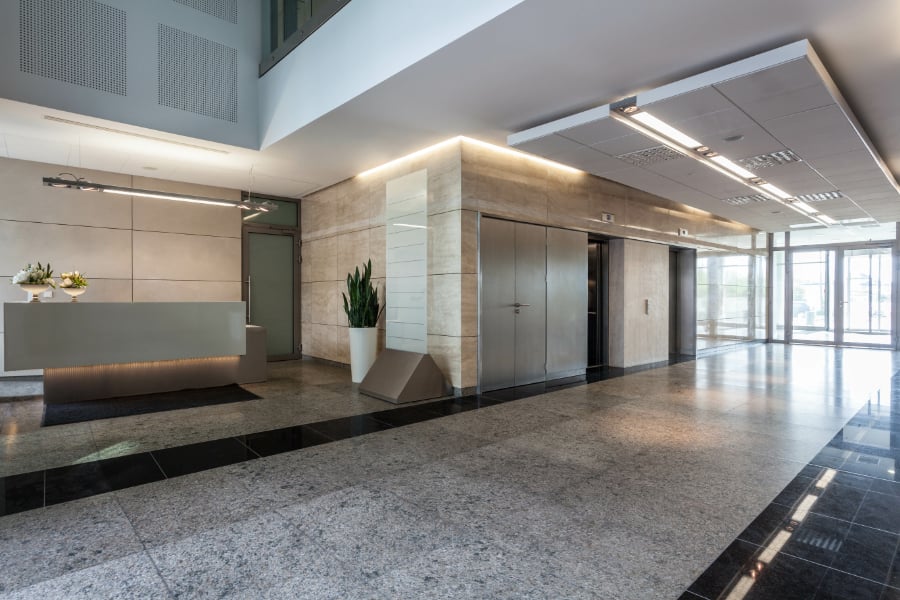In this article, you'll learn:
- What common areas are in multi-tenant office buildings.
- How landlords calculate your pro-rata share of common area space.
- Why you pay for common areas beyond your leased space.
- How common area charges are added to your rent and operating expenses.
If you lease space in most multi-tenant office buildings, you won't only be paying for the space inside your suite's walls. Usually, the building's owner and/or management will also charge you for your share of the common area in the building. This means that your 10,000 square foot space could actually cost as much as an 11,000 to 12,000 space. Here is how this happens -- and works.
Common Common Area Elements
Imagine that you are renting half of the seventh floor in a twenty-story building. You have a 10,000 square foot space and the tenant across the elevator lobby has a mirror image of yours. But you and your co-tenant aren't the only things on the floor.

Both of you use the elevator lobby to get in and out of your space. And you benefit from the hallways that give your employees a second (and, potentially, third) egress point for safety and convenience. If you don't have an en suite restroom, you and your workers benefit from the shared bathrooms on the floor, as well. And everyone appreciates that the building's management staff has extra equipment and supplies locked in a closet on your floor, too.
All of those spaces make up the common area on your floor. They aren't yours, but you do benefit from them. However, they don't account for the entire building. The first floor or two of the building probably has a lobby and an atrium. It might have extra amenity spaces, like a fitness center, shared conference room, or both. Since you and everyone else in the building benefit from those spaces, they also get included in the common area for which you are billed.
Your building might even have an invisible common area. A single garbage facility or water connection fits this bill. In this case, you might not see it or be able to walk on it, but you benefit from it along with everyone else in the building. As such, that expense becomes part of your common area responsibility.
Pro-Rata Share and Common Areas
Now that we understand what goes into a common area, we can look into how we pay for that space. First, your landlord will calculate your pro rata share of the building. So imagine that a building has 400,000 square feet of tenant suites, and you have 10,000 of them. By dividing 10,000 into 400,000, you find that your pro rata share of the building is 0.025 -- 2.5 percent.
Next, the landlord turns to his measurement of the building (or the multi-building park, or just your floor, depending on which standard your lease specifies) to see how much of the building is common area. So, if the building has 400,000 square feet of tenant suites, and another 60,000 square feet of common area space, the tenants will have those square feet added on to their space. Your landlord would take your 2.5 percent pro rata share, multiply it by the 60,000 square feet of common area, and find that you pay for 1,500 square feet of the common area.
This additional space gets tacked on to your leased area, and you end up paying rent on the total -- 11,500 square feet. That covers the rent for the common areas, and the cost of maintaining them gets covered when you pay your pro-rata share of the building's operating expenses.
Here are a few other article we think you'll enjoy:
What to Know About Your OPEX (Operating Expenses)
Subscribe to our blog for more CRE tips!!







